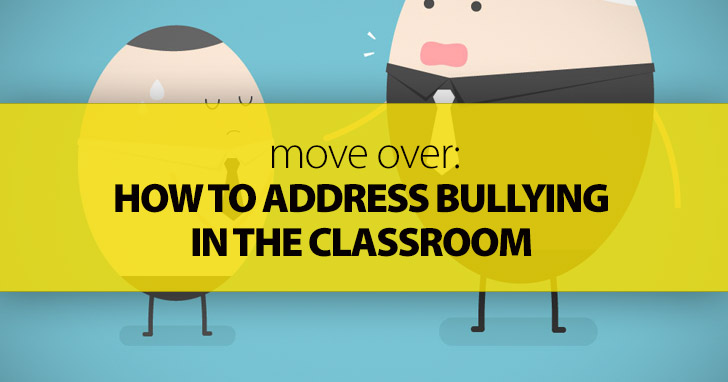Gossip, Backstabbing: 10 Commandments of Dealing with Problem Colleagues


Most of the writing on the topic is focused on bullying among school-age children, where we seem to associate the problem the most, and indeed the very term “bully” tends to summon images of a large boy in shorts, intimidating his smaller peers on the schoolyard to steal their lunch money. However, bullying does occur among adults, of either gender, and it can occur in the classroom.

Bullying is simply the act of controlling others by instilling personal fear. The methods used by the bully can be both physical and mental, often both. In the classroom of adults, bullying rarely is taken to the level of physical violence but can be just as intimidating. Specific methods used may be among the following: verbal abuse, humiliating, moving into other’s physical space, implied or direct threats, demeaning criticism and the spreading of rumors. The purpose of bullying is to control through fear those the bully targets for whatever reason—often because the target is perceived as “weaker” in some way. The bully, who almost always feels in some inferior to others, gets a temporary boost to her ego through intimating—at least someone is of lower status.

Preventing bullying is easier than trying to stop it once it has begun. Either can be achieved, however, in the following ways:
Many teachers spend the first day of class establishing ground rules and norms of behavior in class. This is important even in classes with adults, due to the diversity of our classrooms. Students come from widely different backgrounds and have varying understanding of appropriate behavior and often little or no background of such behavior in an academic setting. These standards, once established, can be referred to and reinforced throughout the term. For example, have students spend part of a session discussing classroom expectations and policies in groups and then as a whole class share what they brainstormed. There will probably be a core of standards that all of the groups mention in some way; these can be typed up and handed out at the next class session and/or posted on the class website. Typical policies include such standards as arriving and leaving on time, coming prepared, and so forth. Almost always listed is listening to and respecting others. Some instructors go so far as to have students sign the classroom behavior polices, in effect creating a “contract,” If the contract is breached, varying consequences may follow, from loss of points to, in extreme cases, referrals to the dean of academic discipline. Often a set of such policies will alert the bully to boundaries — boundaries that won’t accommodate his behavior. Some bullies drop the class when they realize their conduct won’t be tolerated, and the instructor is serious about enforcing the expectations.
Model respect for your students — allowing others to talk uninterrupted, respecting other’s opinions and providing criticism in a constructive manner. Much of the classroom climate can be traced to the teacher: if the teacher is authoritarian and doesn’t respect others, then the students will see a classroom where these behaviors are appropriate. In addition, some students, those who are new to an academic environment, may not know what “constructive criticism,” for example, really looks like although they may be familiar with the term on the abstract level. Therefore the instructor should model criticizing student work respectfully, focusing on ways to improve the work, not attacking it, or worse, its author. Establish your classroom as a place where it is safe to express opinions and make mistakes without being exposed to attacks or ridicule.

If bullying occurs, even with careful design of a safe classroom environment, it’s important not to ignore or avoid confronting a bully as this sends a message that the behavior is all right or at least that it won’t be stopped. Name the behavior and point it out as inappropriate, referring to the classroom polices: “As we’ve discussed, it is important in the academic environment to let everyone express her opinion. Please let Sarah finish, William, and then you may respectfully disagree with her.” This emphasizes the classroom standards while sending a message the instructor will enforce them.
A bully’s power is in large part derived to from the “posse” which supports him, either through admiration or fear. Prevent cliques from forming in the first place so there will be no such group to prop up the bully. This can be done by regularly mixing groups and seating arrangements so that the same students are not always working together.
In extreme cases, it may not be enough for the teacher to confront a bully himself; the use of peer pressure can then prove useful. This often evolves organically from the classroom climate as the semester progresses. If the class standards are being regularly enforced, other students often will speak up about bullying behavior or react with dismay or even outrage when the bully interrupts or belittles others. This is in effect turning the table on the usual bullying pattern, where the bully garners support for his inappropriate behavior among his peers. In this case, the peer pressure can be used to stop rather than encourage bullying.
Sometimes, if necessary, a private talk with the bully is needed to curb his behavior if it continues or grows so excessive it interferes with learning. When isolated from her peers and an audience, the bullying loses a lot of her power. Sometimes the bully will react with anger; oftentimes with confusion, as he is so unused to his behavior being corrected.
But by careful creation of a safe classroom climate as well as confronting bullying, the instructor can eliminate or minimize it and its effects.
What are some ways you address bullying in the classroom?